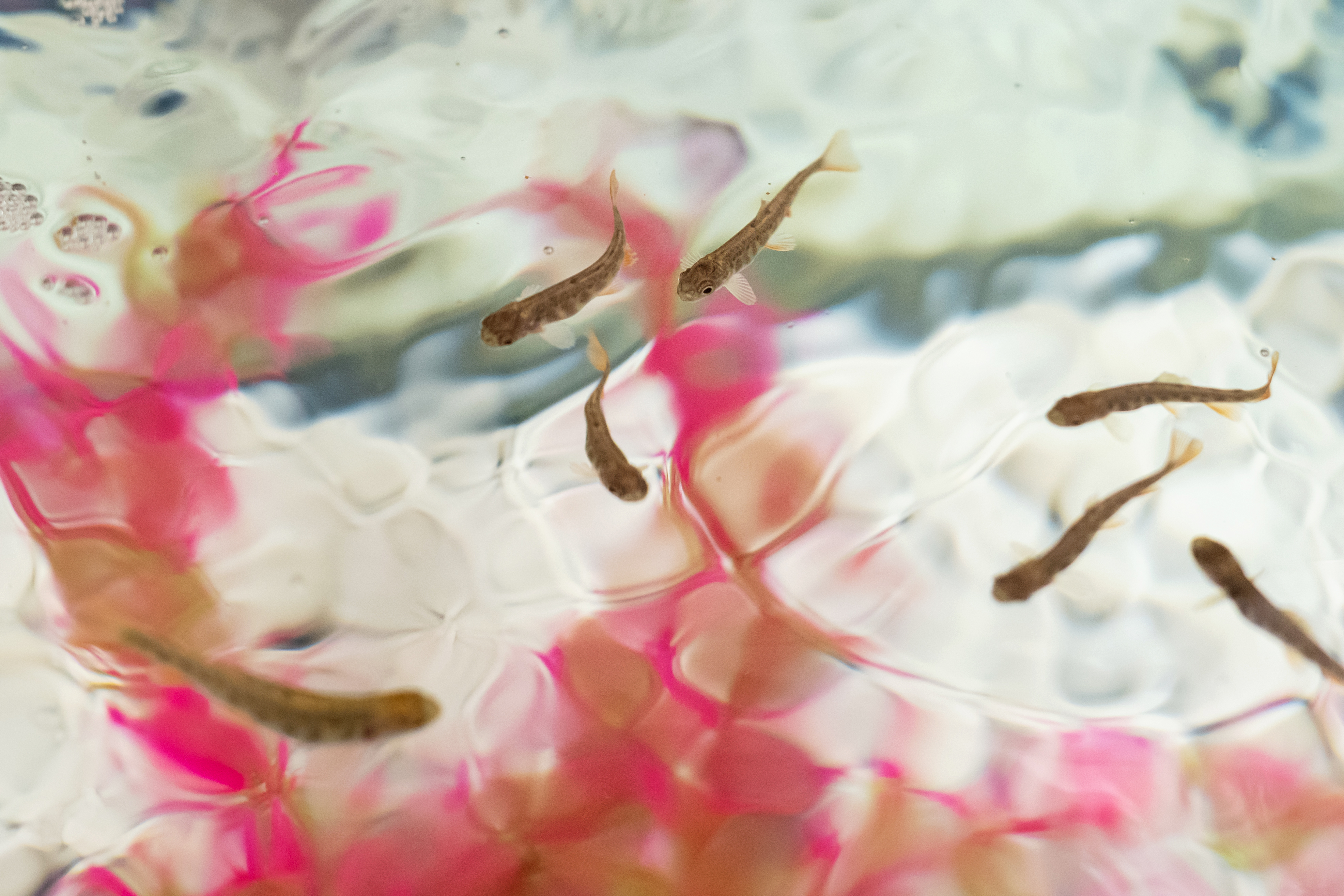With “Trout in the Classroom,” Centreville Students Take a Crash Course in Environmental Science
A fishy lesson is about to pay off for students at Centreville Elementary School. Since the start of the school year, they have worked together to raise trout, hatching them from their eggs. By mid-April, the young trout have grown to a few inches in size and are ready to be released. The school will shuttle students to the Elizabeth Furnace Recreation Area in Fort Hunt on Tuesday, the day after Earth Day, to release the young trout into a stream.
It’s a dynamic, hands-on lesson that uniquely applies STEAM (science, technology, engineering, arts, and math) learning.
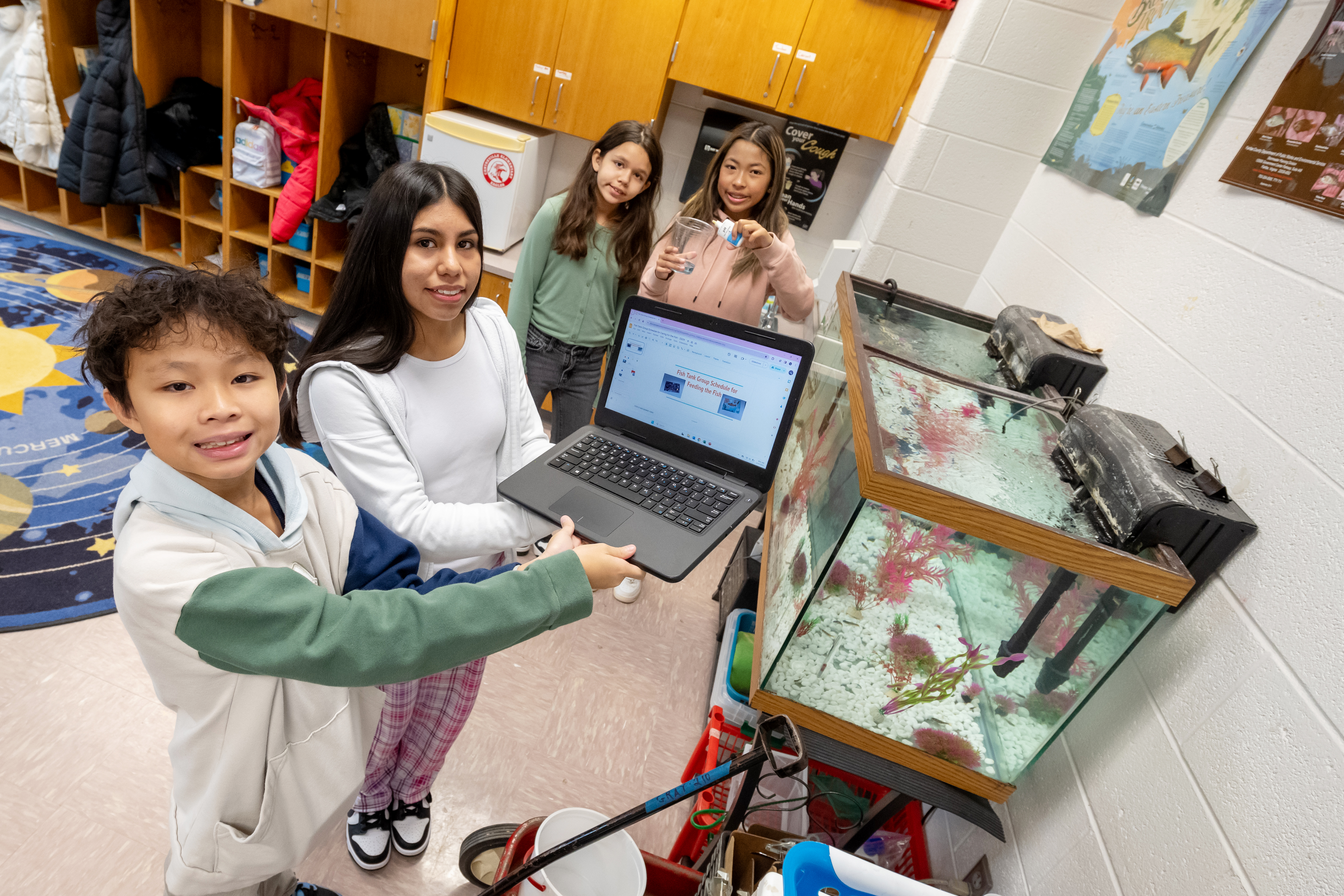
It’s part of a program called Trout in the Classroom, taught in cooperation with the Virginia Council of Trout Unlimited and the Virginia Department of Wildlife Resources. The program's goal is to foster a new generation of environmental stewards by teaching students about the importance of conservation.
Centreville started taking part in the program about 15 years ago.
“It started with one teacher and a tank and taking those kids to whatever designated stream,” said Centreville STEAM lead MaryAnn Settlemyre. “They might have had five fish by the time they went.”
The elementary school now has five tanks and raises many more fish. The students take full responsibility for maintaining them. At the beginning of the school year, they cleaned each tank three times and assembled the water filters and the chillers that maintain the water temperature. After filling the tanks, students tested the pH levels in the water every week. When the trout eggs arrived in late September, the students picked out the “non-viable” eggs that contained fish that wouldn’t survive when they hatched.
“It’s a true STEAM activity,” said Settlemyre. “This is your environmental STEAM in action.”
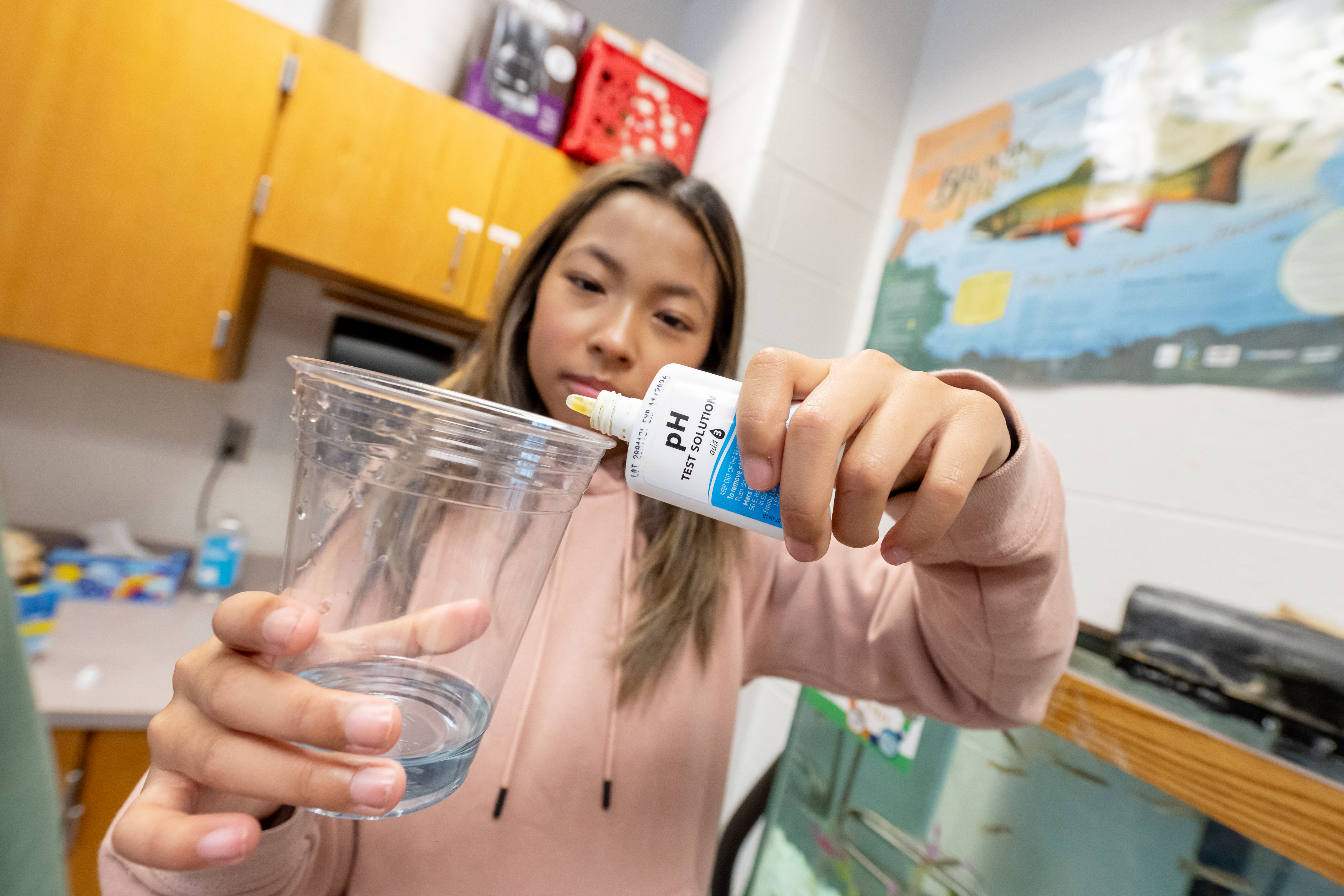
Furthermore, Trout in the Classroom helps align students with many of FCPS’ Portrait of a Graduate goals: by raising the trout independently, the students learn effective communication and collaboration skills. They also develop critical thinking skills when any issues with the tank force them to problem-solve.
Sixth graders Renata and Oriana learned that firsthand. They volunteered to care for the trout in the first week of the school year. Now, taking care of the trout has become a daily routine.
“We feed the trout three times a day. In the morning, we give them one pinch of food, then in the middle of the day, and then in the afternoon, before we go home,” said Renata. “Honestly, in my opinion, nothing has been challenging because once you get the hang of it, it's easy to take care of the fish.”
Oriana is thinking about who will take over the program after she leaves Centreville Elementary School. She says she’s looking for someone who can be a good leader, “someone that works well with a team.”
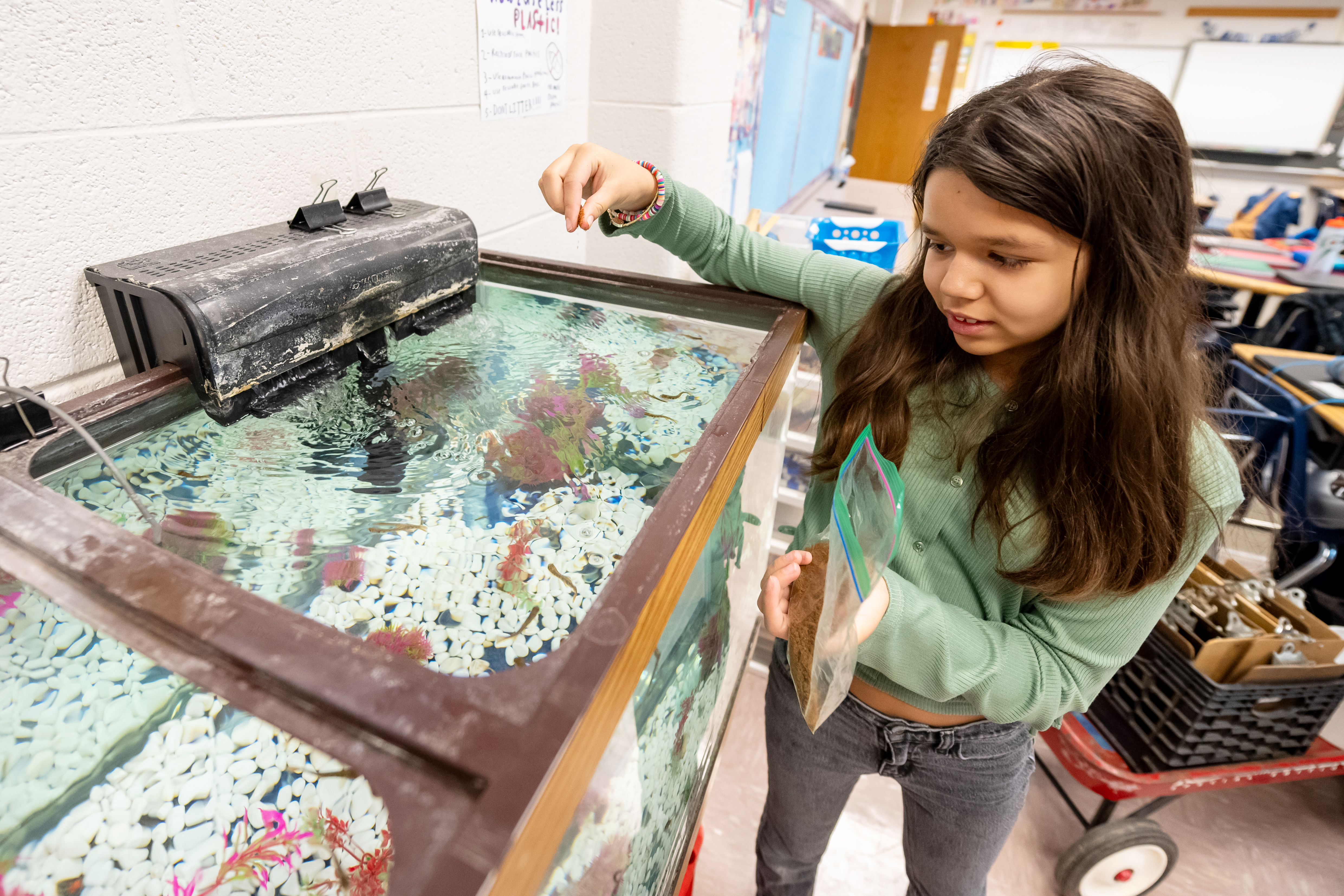
“These guys have done a great job,” said teacher Terry Gray. “They've just taken ownership, taken over, been leaders; they've been communicators. And yeah, they've been problem solvers.”
Gray recalls a recent case where students had to problem-solve fast: the fish in one tank fell ill. The students raced to move them to a new tank in a different classroom. “I don’t think we lost any!” he exclaimed.
When students arrive at the Elizabeth Furnace Recreation Area, they will enjoy a whole field day of STEAM activities, learning about wildlife in its natural habitat. In the past, experts from NASA, the U.S. Environmental Protection Agency, Dominion Energy Inc., and local water treatment facilities tagged along to share their wealth of environmental knowledge with the young scientists in training.
George Paine is the Trout in the Classroom coordinator for Trout Unlimited’s Northern Virginia Chapter. He works closely with Centreville Elementary School teachers and students as they raise and release the trout. He says students in this area have the unique opportunity to learn about the environment through the eyes of Virginia's state fish.
“The Virginia Brook Trout is a native species to the mountains up in the Shenandoah,” Paine explained. “We had them here locally until we had all this development about 50 years ago. It’s a great lesson that shows what happens when you build out a base suburban area and then ruin the watershed.”
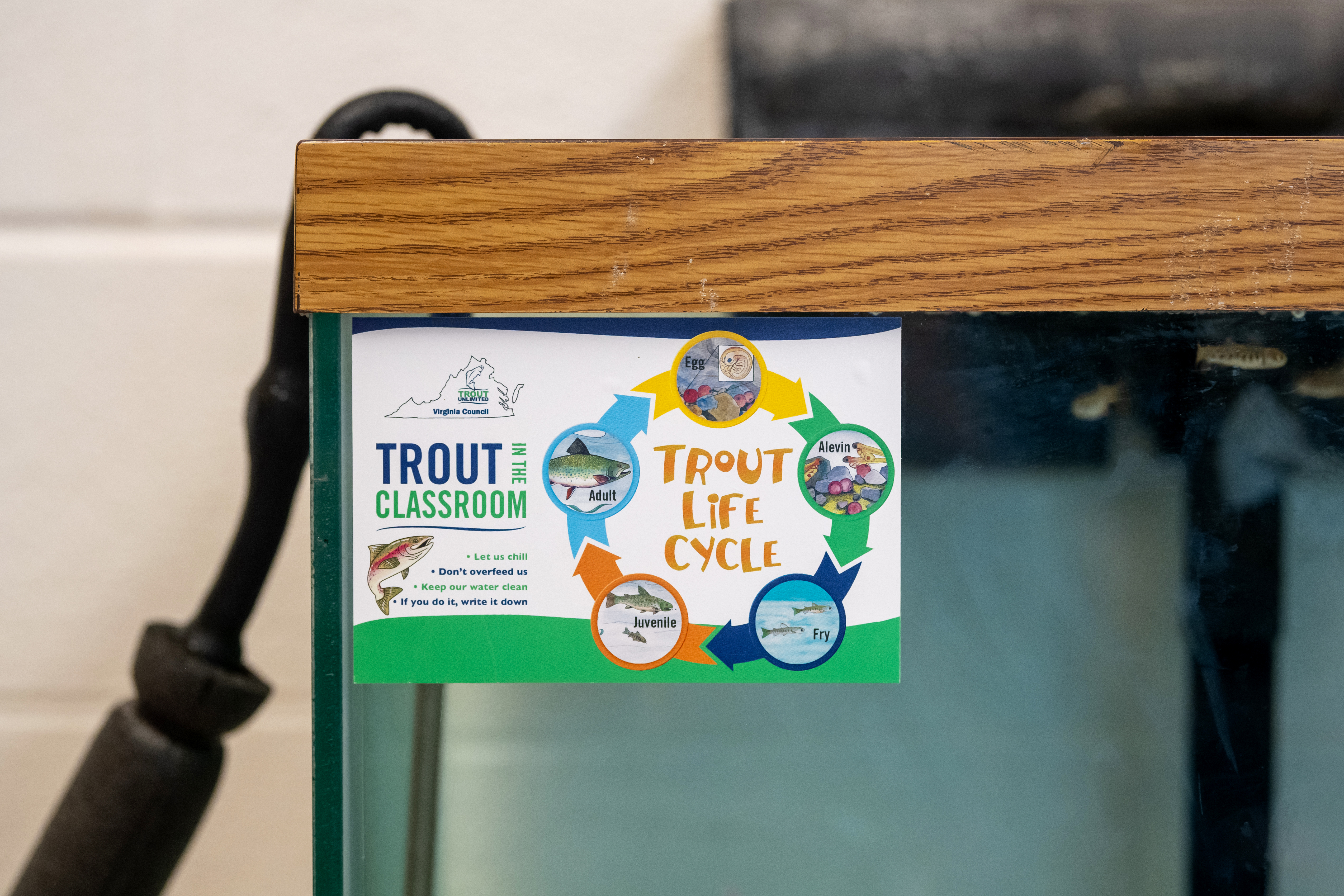
Students from Centreville High School also join the elementary school students on their field day. Members of the 4-H club design STEAM-based workstations. At last year’s trout release, they hosted stations teaching the younger students about Virginia’s native plant life and how to test water quality. The high school students also raise trout and release them during the field day.
This hands-on experience changes the students who participate. Because most Centreville Elementary School students grew up in the largely suburban Fairfax County, “they don’t know what the environment is,” said Settlemyre. “They’ve never been in the woods. They don’t understand. After this day, they become stewards of the environment.”
Settlemyre says the Trout in the Classroom program inspired some of her former students to pursue careers in environmental science. “They always tell me, ‘It's because we learned this from you that we got interested,’” she said. “It's these experiences; it's the opportunity because, for many of our students, they would never know about any of this if we didn't do this in school.”
